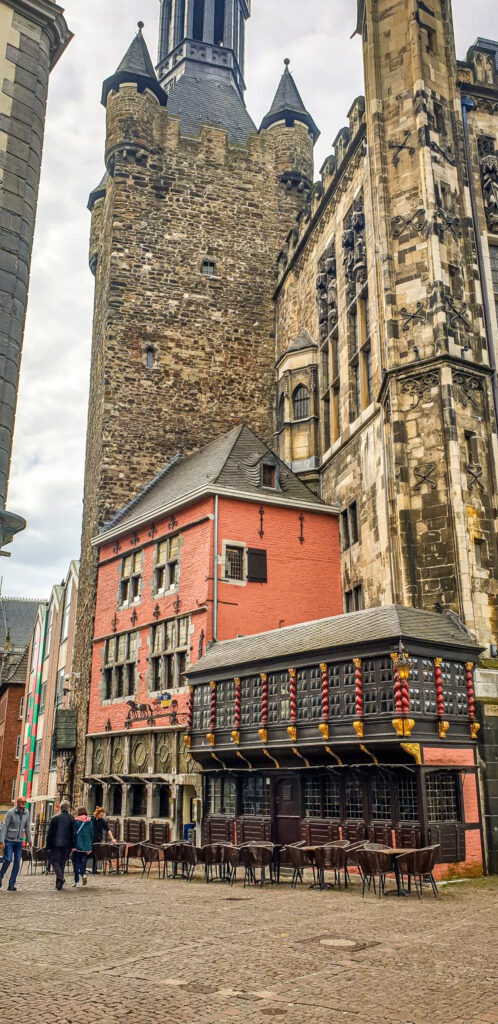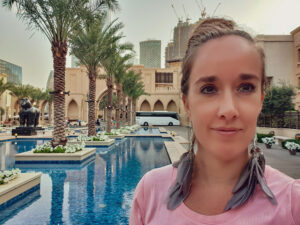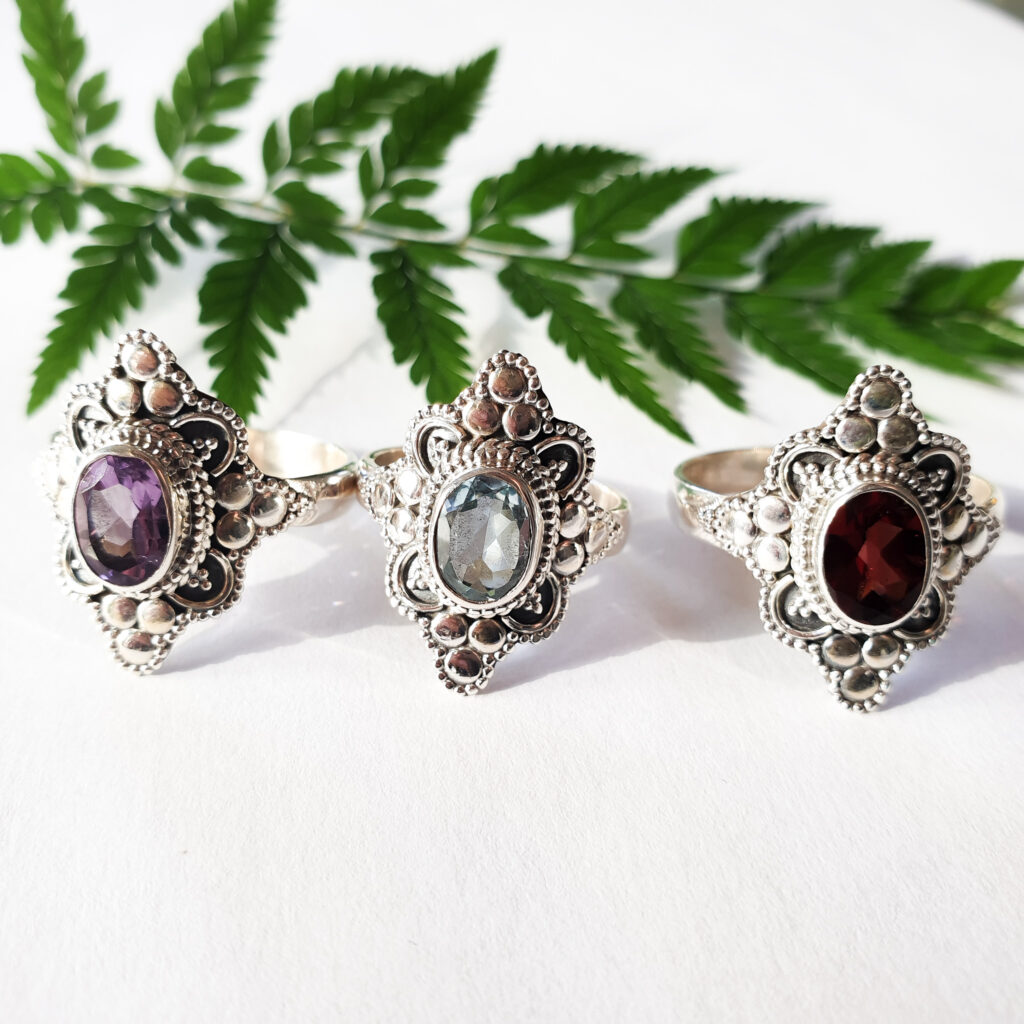Germany is a beautiful country with immense cultural and historical significance. It is a treasure trove for history enthusiasts and culture buffs alike. While many of us associate Germany with cities like Berlin and Munich, there is so much more to explore. Aachen is a small picturesque city located in the westernmost part of Germany near the border with Netherlands and Belgium. It is a popular tourist destination due to its rich history, stunning architecture, and vibrant culture. In this article I will explore some of the most notable monumental highlights to visit in Aachen.

Table of Contents
Aachen Cathedral
The stunning Aachen cathedral is a UNESCO World Heritage site. It was built by the Emperor Charlemagne in the year 790 AD. The structure has since undergone many renovations which has given its current Gothic and Romanesque architecture. It is believed that many of the columns, sculptures and materials used in the construction of the cathedral came from other Roman buildings in the area. It would explain the unique and intriguing aesthetic features of the cathedral.
Inside the cathedral, one of the most notable features is the Palatine Chapel. This beautiful chapel was built in the year 800 AD. It has a stunning Byzantine art with mosaics decorating the walls and ceilings. They are painted in shades of gold, blue, and red. The Palatine Chapel is also home to the most prominent relic of the cathedral, which is the Throne of Charlemagne. The Throne of Charlemagne is a masterpiece of medieval art, and many historians believe it was the Emperor’s seat.
Another incredible feature of the Aachen Cathedral is the grand westwork, which is a triumphal arch that magnificently frames the main façade of the Cathedral. The westwork is characterized by its two imposing spires and have a height of 71-metres. The spires have been an important landmark of the city’s skyline for centuries.


Baptistery
The octagonal Baptistery is another exceptional architectural feature of the Aachen Cathedral. It was designed by Odo of Metz and has stunning mosaics that are centuries old. This attraction was the home of the coronation stone which once upon a time served as the base for the wooden throne of Charlemagne.
Christian religion
Aachen Cathedral is not just a testament to the unique genius of architects and builders. It also represents the delicate and sensitive balance that was struck between the power of the state and the Christian religion. During the Middle Ages, emperors would get crowned inside the cathedral, showing that they had the authority and blessing of God. As a result, the cathedral has played a significant role in shaping the identity and culture of the city and Germany at large.


Elisenbrunnen
The Elisenbrunnen in Aachen is a classicist building designed by the architects Johann Peter Cremer and Karl Friedrich Schinkel. Construction was carried out by the private master builder of Aachen, Andreas Hansen. The Elisenbrunnen is named after Princess Elisabeth Ludovika of Bavaria, who visited the city in 1822 to visit the thermal springs. Her visit sparked a tourist boom in Aachen, and the local council decided to rename the bathhouse after her. The building was originally constructed in 1827 in a classical style. The Elisenbrunnen has an open foyer with a Doric column entrance and pavilions. Its architecture is a testament to the classical revivalist style that was popular in Germany during the early 19th century.

Restoration
During World War II, the building was heavily damaged and remained in a state of disrepair for many years. However, a major restoration effort was launched in the 1980s, and the building was restored to its former glory. The original classical architecture was preserved, and the Art Nouveau elements were given a tasteful modern twist.
Apart from its stunning architecture, the Elisenbrunnen also has an interesting history. Its thermal springs were first discovered by the Romans in the 1st century AD and were prized for their healing properties. Legend has it that Charlemagne also visited the thermal springs in the 8th century and declared them to be a public good. The springs remained in use throughout the Middle Ages and the Renaissance, and were a popular destination for European aristocrats.

Couven Museum
The Couven Museum’s roots go back to the beginning of the 18th century when Franz Couven, a gifted architect, and builder, purchased the building on Hühnermarkt 17. The building was then extensively remodelled to suit the bourgeois lifestyle of the Couven family. The Couven family lived in the building for over a century, and the building was passed down through generations until it was sold in 1843. Over the years, the building was used for a variety of purposes and underwent many renovations before becoming the Couven Museum in 1958.
Collection
The Couven Museum’s collection is an insight into traditional Aachen life. Each floor of the museum houses a different time in Aachen’s history. The ground floor is home to a collection of candlesticks, furniture, and other household appliances that groups of Aacheners traditionally passed down as a sort of dowry. The second floor is a collection of paintings, portraits, and religious artifacts. The third exhibits decorative arts and curios from the Rococo and Baroque periods.
A unique feature of the museum is how well-preserved the different decor styles of each era are. Visitors can see a well-curated display of antique furniture and a rare Rococo cabinet. The highlight of the museum is the interiors of the restored residence. The family house’s rooms are complete with stucco work, ornamental paintings, and allegorical murals from Johann Conrad Schlaun, who painted these in 1751.
City Hall of Aachen
The City Hall of Aachen is one of the oldest city halls in Germany. The building features a blend of beautiful Romanesque and Gothic styles. Built-in 1330, this monumental structure has played a significant role in European politics and has acted as an important ceremonial centre throughout history. Constructed using red sandstone, the City Hall resembles the palaces of Italy and is evocative of the Italian Renaissance style.
The City Hall’s primary features include its medieval architecture and its beautiful gilded frescoes. The interior is equally stunning, with a range of gilt plates, woodcarvings, and grand halls with impressive arches. The most noteworthy interior attraction is the Kaisersaal, also known as the Emperor’s Hall, linked to Emperor Charlemagne and German kings and queens. The hall’s architecture features stunning gothic arches, supporting pillars, and intricate vaulted ceilings.
The exterior of the City Hall of Aachen also has amazing decoration. There are many statues, magnificent windows, and towering spires, making it one of the most remarkable pieces of architecture in the country. A striking example of this is the 206 feet Grand Kaiser’s Fountain, constructed in front of the Rathaus and was named in honour of the Charlemagne’s coronation. This beautiful fountain has become a significant tourist attraction in and of itself.
The City Hall has faced a impressive history that’s as fascinating as its architecture. It has been the site of many significant historical events, including the coronation of more than thirty German kings. It was also the birthplace of the coronation of King Henry II, King Otto II, and King Frederick III. The building has experienced several miraculous events such as surviving World War II with minimal damage, making it all the more wondrous. In 1888, the City Hall was extensively renovated, preserving its original medieval architectural features.

Ponttor
The Ponttor was constructed in the 14th century as part of the city’s fortifications. The gate was designed by an architect who was hired by the Aachen city council to fortify the city. It is an excellent example of Gothic architecture, characterised by its pointed arches and intricate carvings. The tower is made up of two stories that are connected by a winding staircase. The first floor was for defensive use, while the top floor was used as a watchtower to alert the city of any impending danger.
The gate’s design was not only functional but also symbolic. The carvings and decorations on the gate show the importance of religious belief in the city. One of the carvings depicts a crucifix, which symbolises the role of Christianity in the city. The gate also has stone sculptures that depict mythical creatures, including a griffin and a sphinx. These sculptures add to the gate’s unique beauty and are a testament to the craftsmanship of its builders.
The Ponttor has undergone several transformations throughout its history. In the 18th century, the gate was repurposed to serve as a toll booth for travellers entering the city. During this time, the tower’s height was reduced by one-third to allow traffic to pass through quickly. Later, during World War II, the gate was heavily bombed, and its central arch was destroyed. The arch was rebuilt in the years that followed.


Marschiertor
The Marschiertor, also known as the Marschier Gate, holds a prominent place in Aachen’s history. This old building was constructed between the years 1267 to 1275, initially built as a part of the outer fortifications of the city. The early design of the Marschiertor had four towers; however, the tower on the eastern side was demolished in the 19th century to clear up the entry. The Marschiertor was initially used as a gate for military purposes and later served as a prison, housing war captives during Napoleon’s conquest of Aachen.

Centre Charlemange
Let’s begin by taking a look at the history of the Centre Charlemagne. Ruling the Frankish Empire from 768 until his death in 814, Charlemagne left a lasting impact on European history. During his reign, Aachen was transformed into a significant cultural and political hub. The emperor’s palace, located where the Centre Charlemagne stands today, was a symbol of his power and greatness. Although Charlemagne’s palace was destroyed over time, the Centre Charlemagne was designed to honour his legacy and provide visitors with a glimpse into his incredible reign.
Architecture
As you move through the Centre Charlemagne, you’ll be blown away by its incredible architecture. The building itself was designed to reflect Aachen’s unique blend of Roman and Germanic influences. Its modern glass and steel design combine harmoniously with the historic façade of the original city walls. Inside, you’ll find a range of exhibition spaces, each designed to showcase a different aspect of Aachen’s history and culture. Artifacts, manuscripts, and paintings give visitors a deep understanding of the city’s rich past.
Collection
One of the Centre Charlemagne’s most unique features is its treasure chamber. Located on the first floor, the treasure chamber houses a collection of priceless relics dating back to the 8th and 9th centuries. You’ll see Charlemagne’s throne, impressive jewellery, and other rare items that have survived centuries of war, conquest, and upheaval. It’s a truly awe-inspiring collection that captures the magnificence of the emperor’s reign.
Moving to the second floor, you’ll find the gallery of the City of Aachen. This fascinating exhibit showcases the city’s history from the medieval period up until modern times. You’ll explore Aachen’s role in shaping German intellectual and artistic culture, as well as its military and political significance. It’s an experience that gives you a complete picture of Aachen’s rich, multifaceted past.


Kurgarten
The Kurgarten is also known as the Spa Garden. It is located on the site of the former thermal springs in the heart of Aachen. The park was designed by the famous landscape architect Peter Josef Lenné in the 19th century.

Carolus Thermen
The Carolus Thermen is a thermal spa that has excellent indoor and outdoor pools, relaxation areas, and saunas. It is named after Charlemagne, who built a palace in Aachen in the 8th century. One of the most stunning features of Carolus Thermen is the Roman-inspired sauna, which offers stunning views of the city from its elevated position. The sauna is separated into three areas, each with a different temperature, creating a truly unique experience for visitors. The sauna also includes a plunge pool, where you can cool off after the intense heat.
In addition to the sauna, Carolus Thermen has an extensive network of pools, including a warm outdoor pool, a saltwater pool, and a variety of other indoor pools of various sizes and temperatures. The pools are set amid lush greenery and provide a relaxing atmosphere that is perfect for unwinding after a day of exploration in Aachen’s historic city centre.
The spa area in Carolus Thermen also offers various treatments, including massages, facials, and other beauty treatments. The treatment rooms are located in a quiet, relaxing area, allowing you to fully immerse yourself in the rejuvenating experience.

Lousberg
Lousberg is over thousands of years old. The forest park takes its name from the leader of the Eburones tribe, Ambiorix. In AD 50, the Romans under the leadership of Julius Caesar attacked the tribe. Among the few people who survived the attack was Ambiorix, who then fled and found refuge on the Lousberg hill. Lousberg was also significant during the Middle Ages, being a location of the coronation of King Otto III in 983. During World War II, the hill served as a place of refuge for residents of Aachen.
Today, Lousberg is a popular tourist attraction for its scenic view of Aachen and its beautiful surrounding greenery. Tourists also visit to see the impressive World War II bunker that now serves as a museum. The bunker-turned-museum gives an insight into history during the war years, including detailed information about the living conditions in the bunkers.

Monumental cities to visit in Europe
Europe’s rich cultural heritage, breathtaking architecture, and magnificent art make it an unparalleled destination for history enthusiasts and architectural connoisseurs. If you’re planning a trip to Europe, be sure to include these monumental cities in your itinerary: Rome, Paris, Antwerp, Florence, Vienna, or Edinburgh in Scotland. Explore these iconic locations, relish in their historical significance, and immerse yourself in a truly enriching cultural experience. Bon voyage!
Are you like me also fascinated by the lost cities and legends in Europe? This fascination comes from a complex interplay of historical curiosity, the allure of the unknown, sense of adventure and the desire to explore and understand the mysteries of the past. These stories and legends continue to captivate our collective imagination. Even today. There are countless lost cities and ancient settlements in Europe.

Practical travel tips
Are you yearning for a vacation but are short on funds? Travelling on a budget can be a fantastic way to explore new destinations without breaking the bank. With careful planning, research, creating a travel budget and a little bit of flexibility, you can enjoy a cost-effective trip that leaves a lasting impact. Read on to discover 10 tips for budget travel that will help you start planning your next trip.



This Post Has 3 Comments
The information about the Kurpark is very confusing. There is nog Charlemagne on horseback statue in Germany anymore, and certainly not in a park. There is nog Monopteros or lust tempel in Aachen any more, but there is one in Munich. The description you give of the Kurgarten and Musik Pavillon corresponds with the park on the Lousberg. There is a Belvedere tower there. Not very old, though, but with beautiful views. There are nog mosaics or stained glass windows in the Elisabeth Brunnen. That is in the cathedral. Was this blog made with ai?
Hi Anne,
Thank you for your message and for highlighting the errors in my work. I use AI to improve my writing because English isn’t my native language. I gather background information and facts from various websites and blogs and it appears that some of the details are inaccurate. Your feedback is valuable in helping me stay focused and improve the accuracy of my content. I will change the article to rectify these mistakes. I apologize for any confusion.
Adriana
Hi Adriana. Thanks for your reaction. I just stumbled upon a video on Youtube, about the Kurpark In Burscheid! (a little town next to Aachen and now a part of it) https://www.youtube.com/watch?v=jee1mEcgMtM&t=210s That is more similar to what you described and I am glad I saw it. It seems my research was not a 100 % right either! 🙂 There is the old Couven Pavillion, small but beautiful. And integrated in the larger 60-ties pavillion there is also a small 19th century spa bath for royalties, the ‘Fürstenbad’. It has the beautiful mozaics the article described. Bath and mosaics were brought here from the Kaiser bath that had been bombed in the war. Still no monopteros, but standing on one side of the park, you can look down. Still, to look over Aachen, you have to go to the Lousberg and climb up for a beatiful view. Good luck with your site!